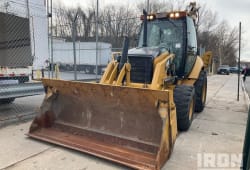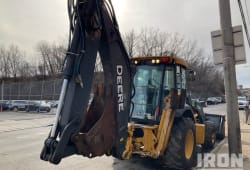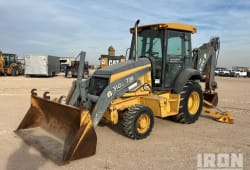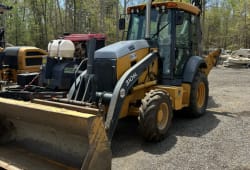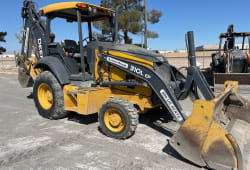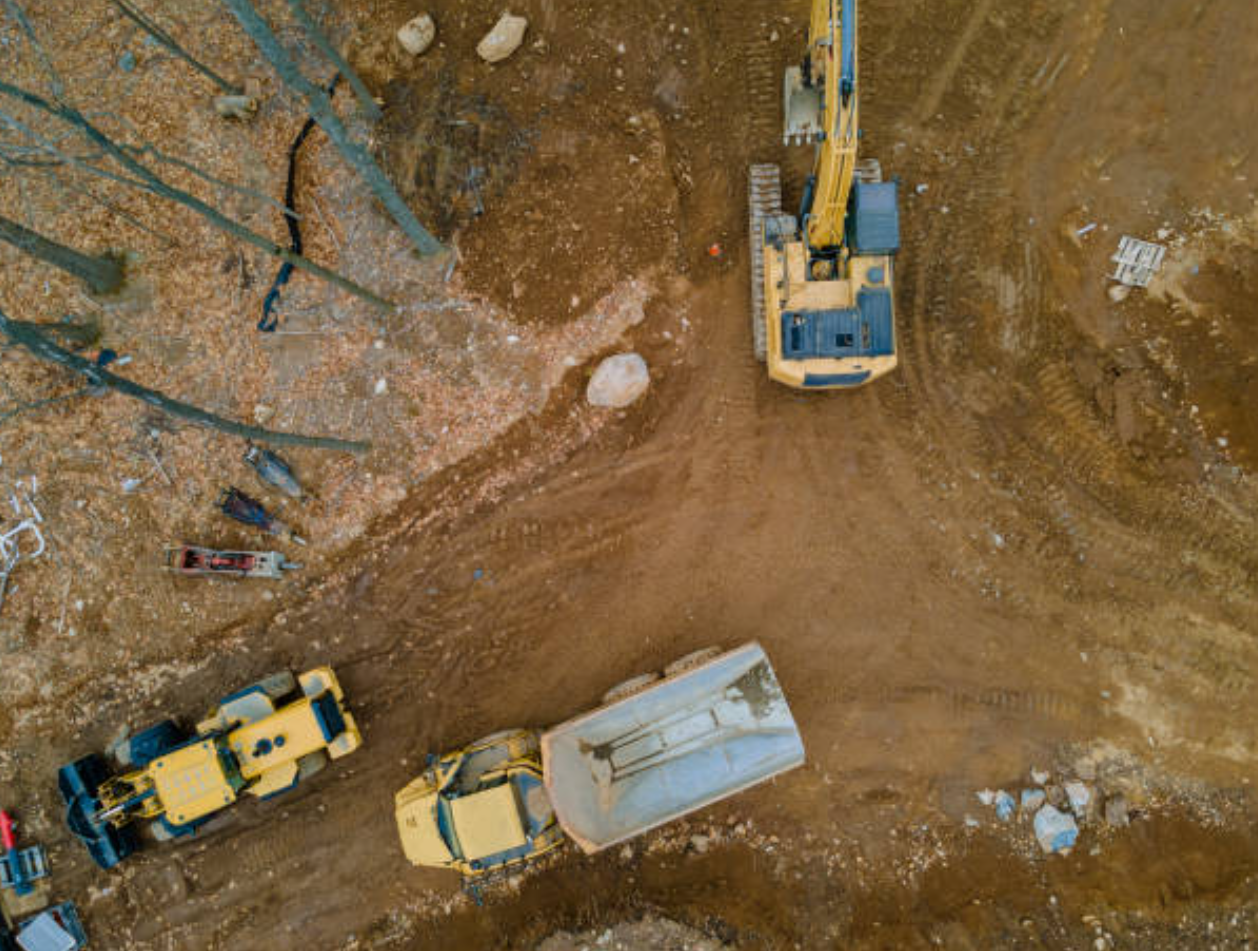All About Backhoes: The Machines That Dig
7 Min read
)
September 9, 2023
Backhoes are powerful machines that can dig deep into the earth, making them essential tools for construction, landscaping, and other industries. These versatile machines are capable of performing a wide range of tasks, from digging trenches and foundations to removing stumps and debris. In this article, we’ll explore the capabilities and versatility of backhoes, their various uses, and how they can help you get the job done. Whether you’re a seasoned professional or just starting, this guide will provide you with valuable insights into the world of backhoes. So, let’s get started!
Understanding the Concept of Backhoes
Backhoes, also known as backhoe loaders, are versatile pieces of heavy equipment that are commonly used in construction, landscaping, and other industries. These machines combine the capabilities of a loader and an excavator, allowing operators of them to perform a wide range of tasks.
What is a Backhoe Loader?
A backhoe loader is a type of heavy equipment that consists of a tractor-like unit fitted with a loader-style bucket on the front and a backhoe on the back. The loader-style bucket is used for tasks such as lifting and moving materials and grading, while the backhoe is used for digging and excavating.
How does a Backhoe Loader work?
A backhoe loader works by using hydraulic power to operate its various components. The loader-style bucket on the front is raised and lowered using hydraulic cylinders, while the backhoe on the back is operated using a series of levers and hydraulic controls. The operator sits in a cab on the rear of the machine and uses these controls to perform tasks such as digging, grading, and moving materials.
History of Backhoes: How did Backhoes come to be?
The first backhoe loader was a model invented in 1953 by Joseph Cyril Bamford, the founder of JCB. This machine combined the capabilities of a loader and an excavator into one compact unit, making it an incredibly versatile tool for construction and other industries. Since then, backhoe loaders have continued to evolve, with manufacturers introducing new features and capabilities to make these machines even more useful and efficient.
What are the different types of backhoes and how are they used?
Backhoes come in a variety of sizes and configurations, each designed for specific tasks and applications. Some common types and brands of backhoes include center-mount backhoes, which have the digging arm mounted in the center of the machine, providing a balanced and stable platform for digging and excavating. Another type is side shift backhoes, which have the digging arm mounted on the side of the machine, allowing it to be shifted from side to side. This provides greater flexibility when working in tight spaces or around obstacles. There are also mini backhoes, which are smaller and more maneuverable than their larger counterparts, making them ideal for tasks such as landscaping and small-scale excavation.
Each type of backhoe is designed for specific tasks and applications, so it’s important to choose the right machine for your needs. For example, a center-mount backhoe may be ideal for heavy-duty excavation work, while a mini backhoe may be better suited for landscaping or other tasks that require greater maneuverability.
How to operate a backhoe safely
Operating a backhoe safely requires proper training and experience. Before operating a backhoe, be sure to read the operator’s manual to familiarize yourself with the machine’s controls and safety features. Before starting work, inspect the machine to ensure that it is in good working condition. Check for any signs of damage or wear, and make sure that all safety features are functioning properly. When operating a backhoe, be sure to wear appropriate safety gear, including a hard hat, safety glasses, and steel-toed boots. Use caution when working near obstacles such as buildings or power lines, and keep a safe distance from these hazards. Use a spotter if necessary to help guide your movements.
By following these tips and using common sense, you can help ensure the safe operation of your backhoe.
How to keep a backhoe in good condition
Keeping your backhoe in good condition is essential for ensuring its safe and efficient operation. Follow the manufacturer’s recommended maintenance schedule to keep your machine running smoothly. This may include tasks such as changing the oil, checking fluid levels, and inspecting belts and hoses. After each use, clean your backhoe to remove dirt and debris. This will help prevent corrosion and other damage. When not in use, store your backhoe in a dry, covered area to protect it from the elements. This will help prevent rust and other damage caused by exposure to moisture.
How backhoes are used to dig graves
Backhoes, also known as backhoe loaders, are versatile pieces of construction equipment that can be used for a variety of tasks, including digging graves. With their powerful hydraulic systems and loader bucket attachments, backhoes load and are capable of quickly and efficiently excavating the earth to create a grave. The compact models of backhoes, such as JCB backhoe loaders, are particularly well-suited for this task, as they can easily maneuver in tight spaces and have a dig depth that is appropriate for creating a grave.
The process of digging graves
The process of digging a grave using a backhoe typically involves several steps. First, the operator will use the loader bucket to remove the top layer of soil and any vegetation from the area where the grave will be located. Next, the operator will switch to the backhoe attachment and begin excavating the earth to create the grave. The operator will carefully control the depth and width of the excavation to ensure that it meets the required specifications. Once the grave has been dug to the appropriate depth, the operator will use the backhoe to smooth and level the bottom of the grave.
How much time does it take for a backhoe to dig a grave?
The amount of time it takes for a backhoe to dig a grave can vary depending on several factors, including the size of the grave, the type of soil being excavated, and the skill of the operator. In general, however, a skilled operator using a backhoe can dig a standard-sized grave in just a few hours. Of course, this is just an estimate and actual times may vary.
If you’re interested in purchasing or renting a backhoe for digging graves or other tasks, one of the many options available is Boom and Bucket.
How much does grave digging cost?
The cost of digging a grave can vary widely depending on several factors. These can include the location of the cemetery, whether it’s a public or private cemetery, the depth and size of the grave, and whether the work is being done by hand or using machinery like a backhoe. On average, the cost of grave-digging services can range from a few hundred to several thousand dollars. It’s always best to contact local cemeteries or funeral homes to get an accurate estimate based on your specific needs and circumstances. Remember, this is just an average estimation and actual costs may vary.
Conclusion
In conclusion, backhoes are versatile and powerful machines that can help you get the job done quickly and efficiently. Whether you’re digging graves, excavating foundations, or loading materials, a backhoe can provide the performance and capabilities you need to succeed in your business. With great visibility from the cab, easy-to-use controls, and a range of attachments available, backhoes are an essential tool for any construction or landscaping project. So why wait? Start your search for the perfect backhoe today, whether it’s a Caterpillar, JCB, or another top brand, and take your business to the next level.

